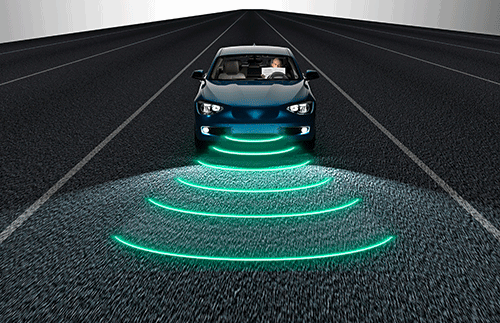 Read the peer reviews for this article
Read the peer reviews for this article
History teaches us that technology can have a profound impact on our society. What’s more, it has the temerity to set its own pace as it does so.
Just 15 years after the Stockton and Darlington Railway opened for business, railway mania was generating hundreds of miles of rail routes across the country. Twenty-five years ago few of us had an email address, yet today ecommerce is a cornerstone of the economy. And that smart phone you can’t put down? Science fiction a decade ago.
Our lives are redrawn with tacit permission to innovation’s whim. Railways have not, should not and will not escape the march of progress. And neither will other parts of the public and private transport picture.
This summer, the Department of Transportation in the United States unveiled what it called the “first federal policy on automated vehicles”, with the aim “to create a path to fully autonomous technology”. To put it another way, self-driving cars.
Not to be outdone, our own Department for Transport has allied with the Department for Business, Energy and Industrial Strategy to set up the Centre for Connected and Autonomous Vehicles. Over the summer, they ran a consultation entitled Pathway to Driverless Cars. Its opening paragraph bets big:
“Over the next few years advances in connected and automated vehicle technologies will have a profound impact on our transport system, with the potential to deliver major benefits: fewer crashes on our roads; freedom to travel for those who currently find that difficult; more efficient transport networks that are safer, smoother, and swifter; and, new high-value jobs in the technology and automotive sectors.”
Of course, technology forecasts have been infamously wrong before. My children are not yet raised on Mars, and my home is still built out of bricks, rather than being some geodesic grass-roofed Hobbit hole. However, cars that can whisk you to work while you either type on a tablet or doze behind the wheel would appear to be the flavour of the month when it comes to ‘the next big thing in transport’. And not just among policy makers.
Also weighing in this summer, the Boston Consulting Group (BCG) published an article entitled Will Autonomous Vehicles Derail Trains?
The BCG assumes a future where autonomous vehicles (AVs) become fully operational and commercially available in the next two decades. Its research suggests “the number of travellers who will opt for AVs in the future could be considerably larger than expected”, and that “over time, at least 40% of current train passengers will come to prefer taking an AV over the train”.
Thomas Steffens, the principal of BCG’s Amsterdam office, is one of the authors: “I work full-time in the transport and logistics sector. We see driverless vehicles disrupting the taxi space, trucking and road transport space. Almost all of the sectors within transport and logistics are being disrupted by digital.”
Is rail a safe haven in a world of disruption?
“When we looked 20 years ahead we could imagine driverless vehicles or autonomous technology changing the comparative economics between road vehicles and rail-bound transport in a fundamental way, and thereby putting the current business in rail at risk.”
BCG theorises along a number of lines. One of them is increased productivity - the argument that you can now work behind the wheel, filling the travel time just as you would on a train, makes an AV attractive to would be users. Secondly, people who can’t physically drive for medical reasons, or those who simply don’t have a licence and therefore choose the train, may also be attracted to make a switch.
However, BCG goes much further with its thinking. It explores a future where the advantages of a car that can arrive at your door when you request it, and can then drop you at your precise destination, will encourage both ride sharing and car sharing. Using data gathered in the Netherlands, it predicts that once that starts happening, travel costs (in terms of price per passenger per kilometre), will fall not only well below a conventional car but also just below train travel (see graph, overleaf). And the saving becomes more significant for people travelling outside peak times and in rural areas.
“What needs to happen is a flawless AV technology,” says Steffens, discussing how the technology might find its way into the market and be adopted by consumers.
“There are two levels. Full functionality on the highway versus full functionality door to door, in residential areas. The first is not that difficult and will happen in the next five to seven years (nobody is sure exactly), and it will affect the rail business a bit. If vehicles become autonomous on the highway, people who might take the train will say: ‘I will take the car because I can work on the highway and save time.’ This is limited to less than 10% of train journeys.











